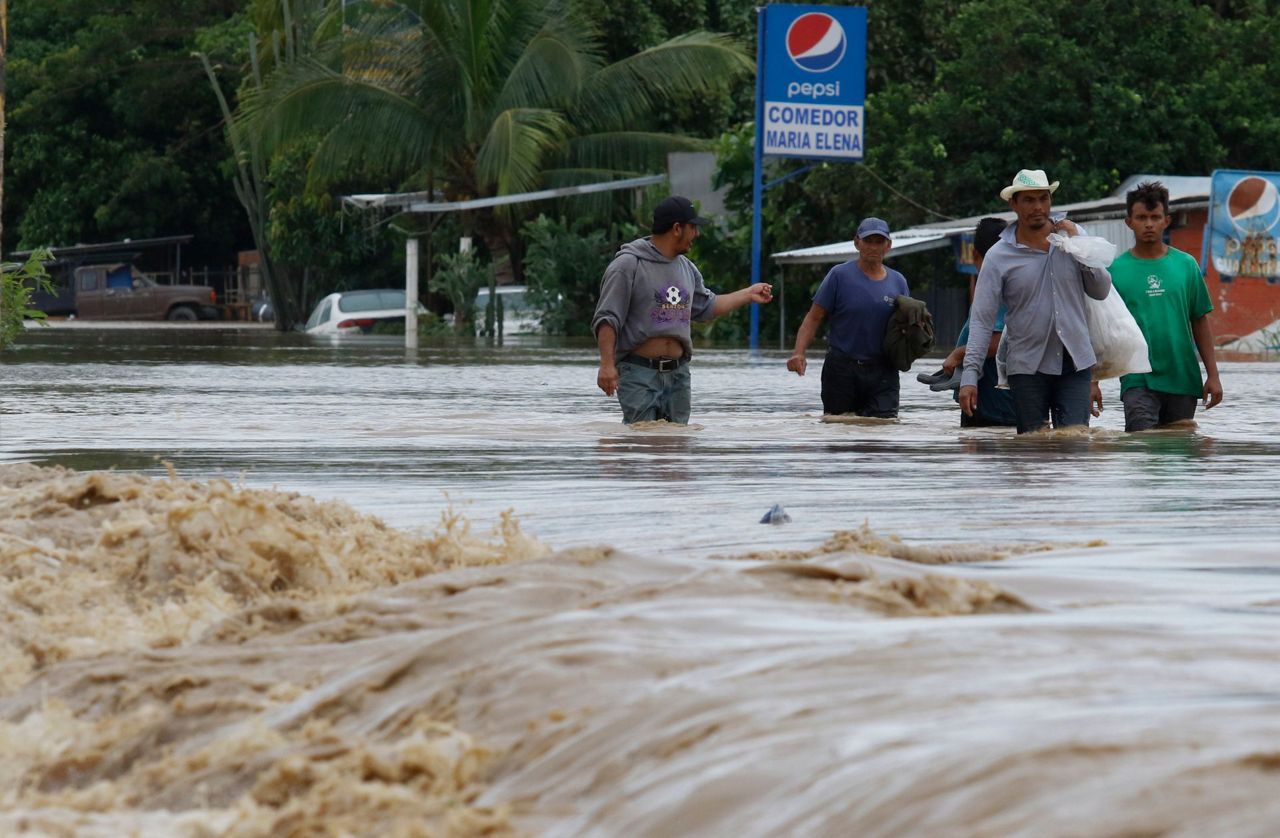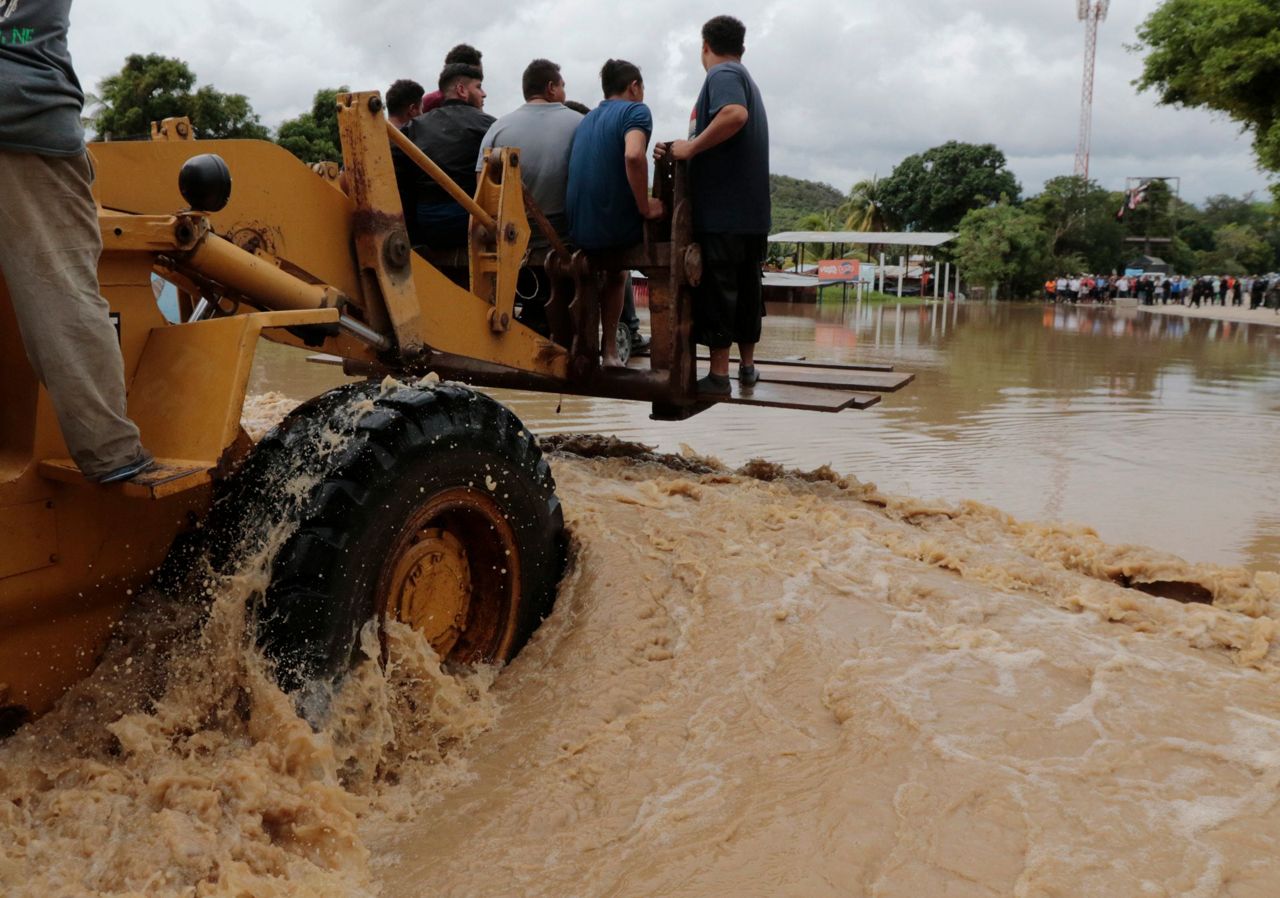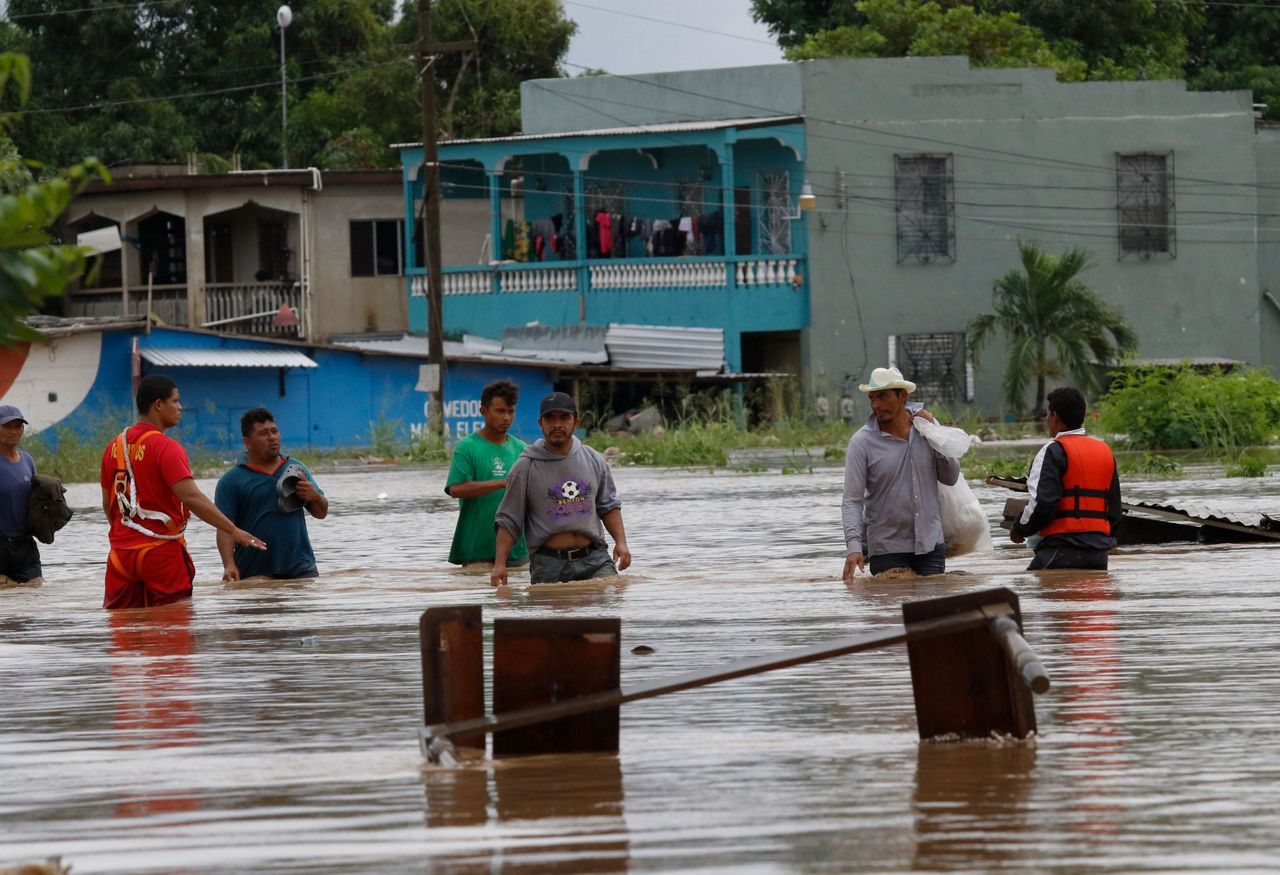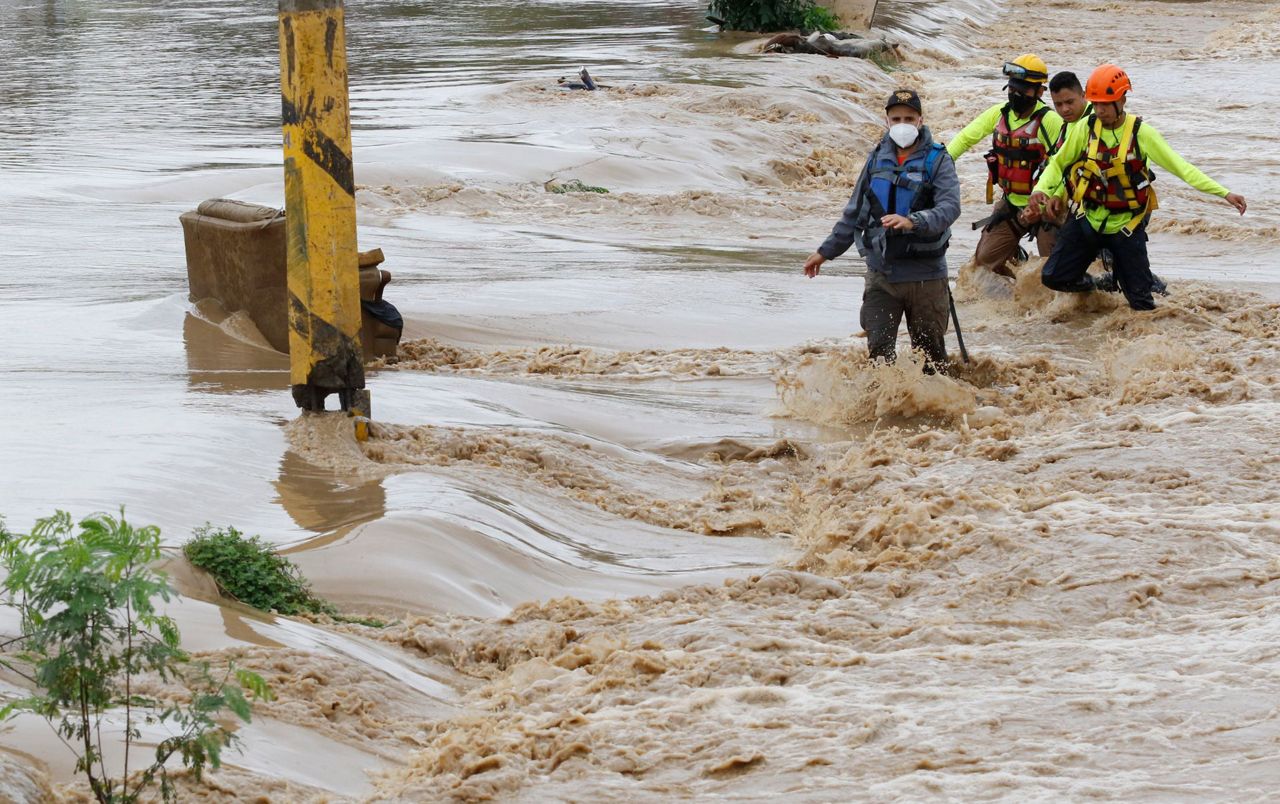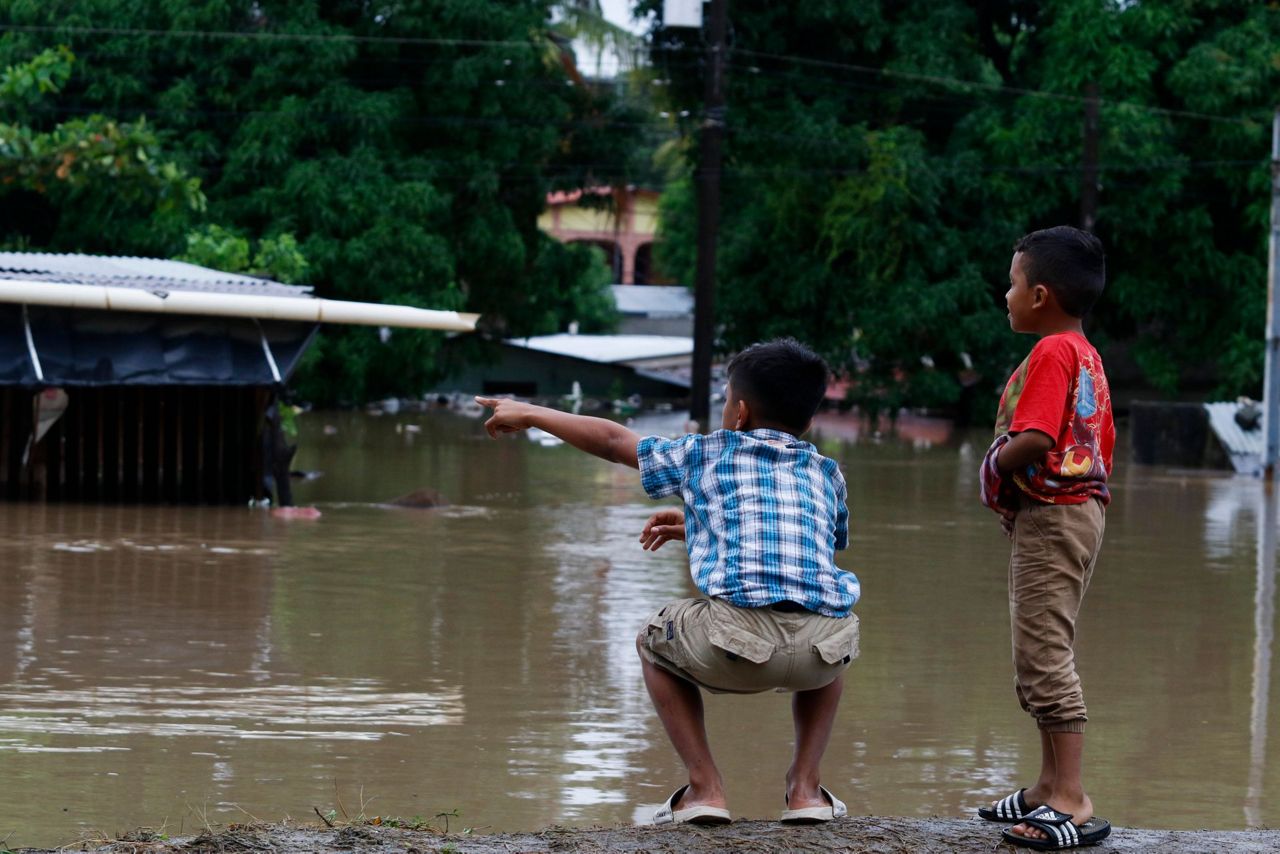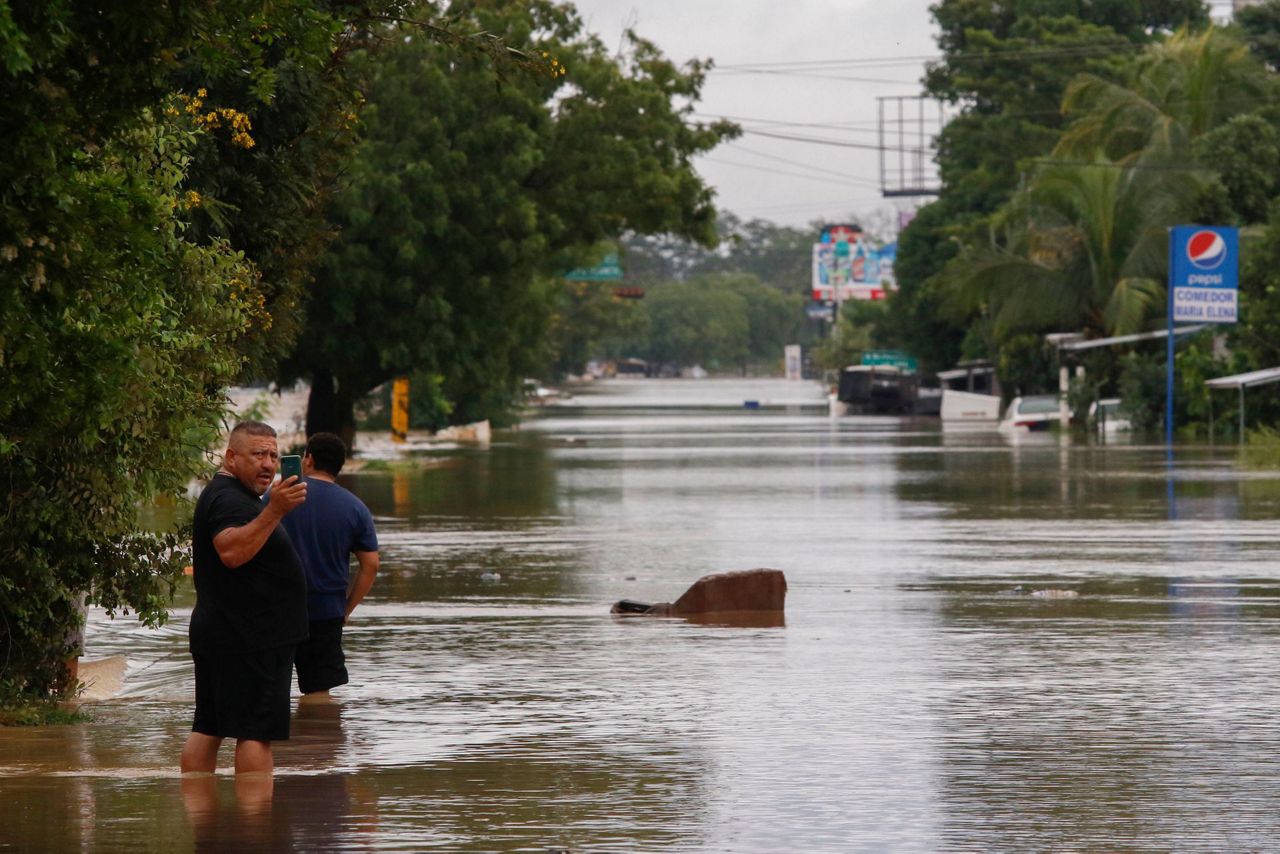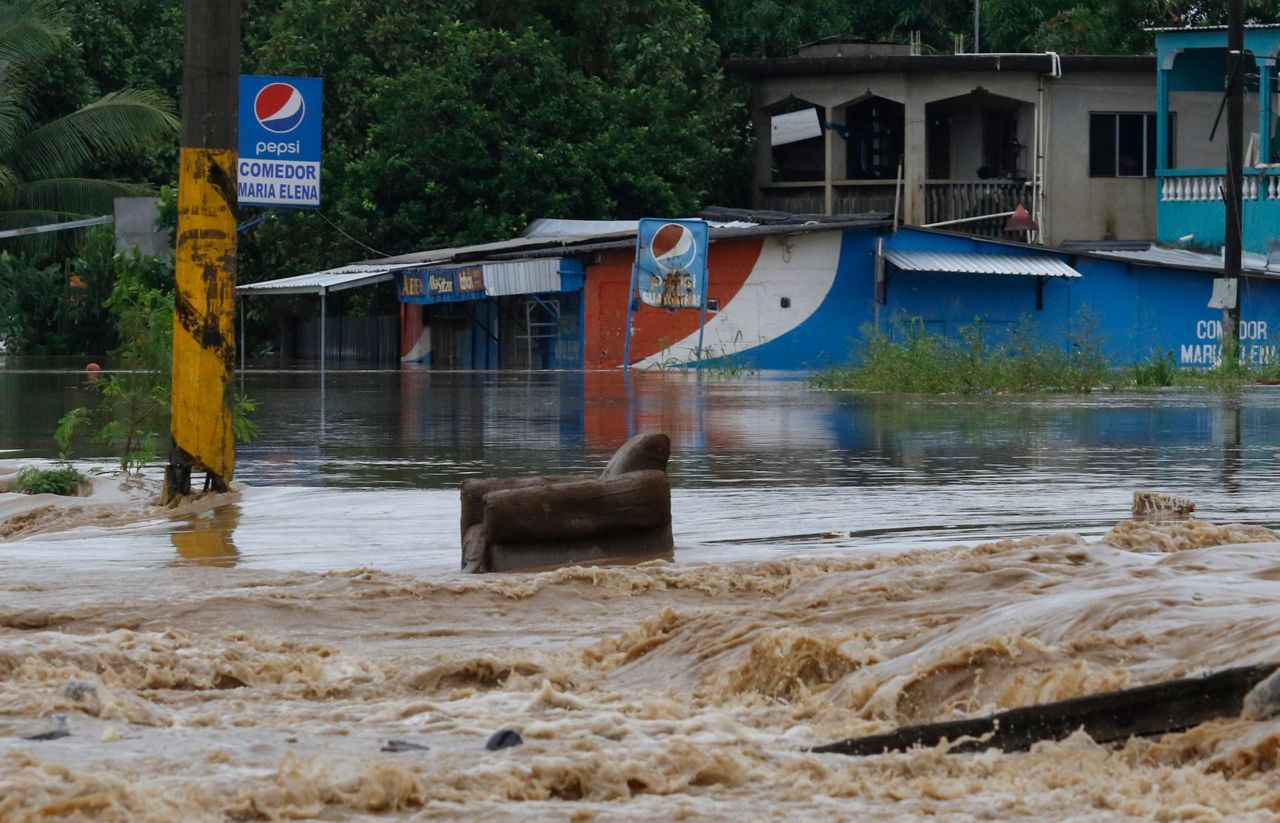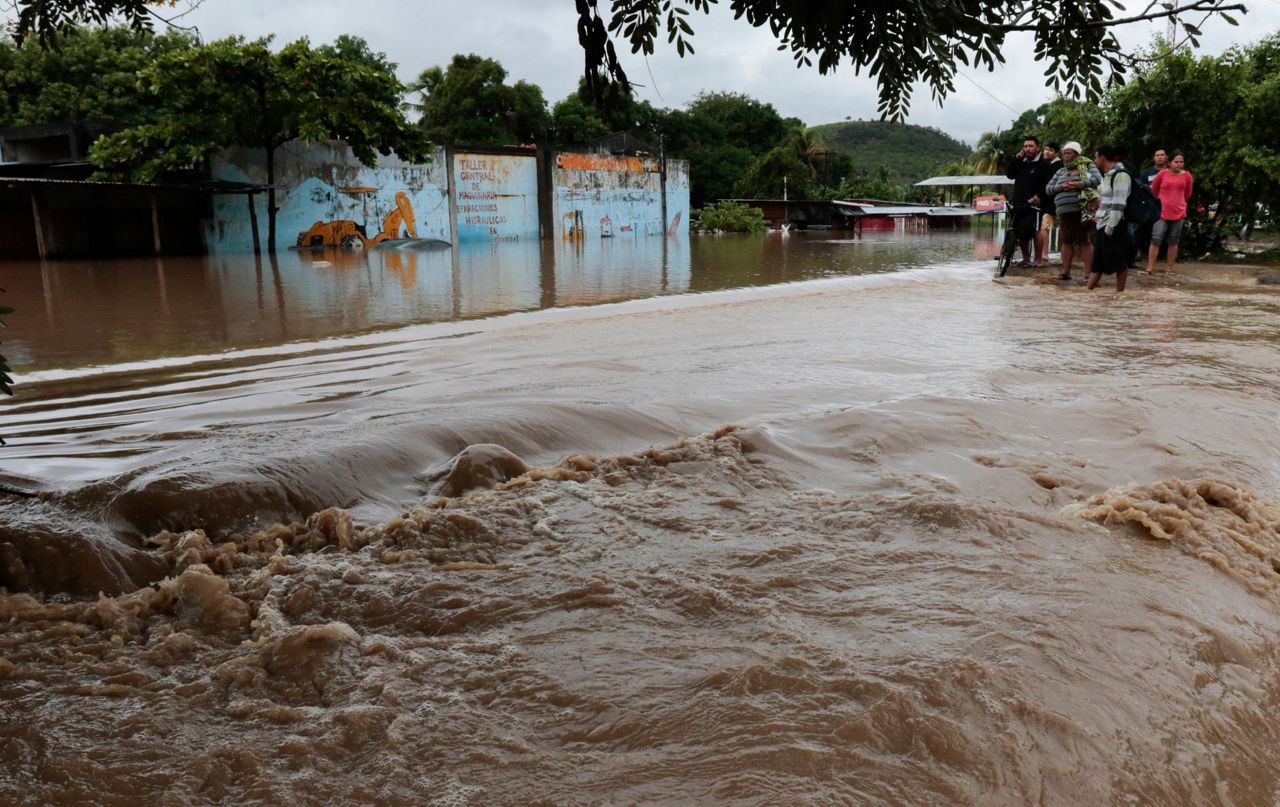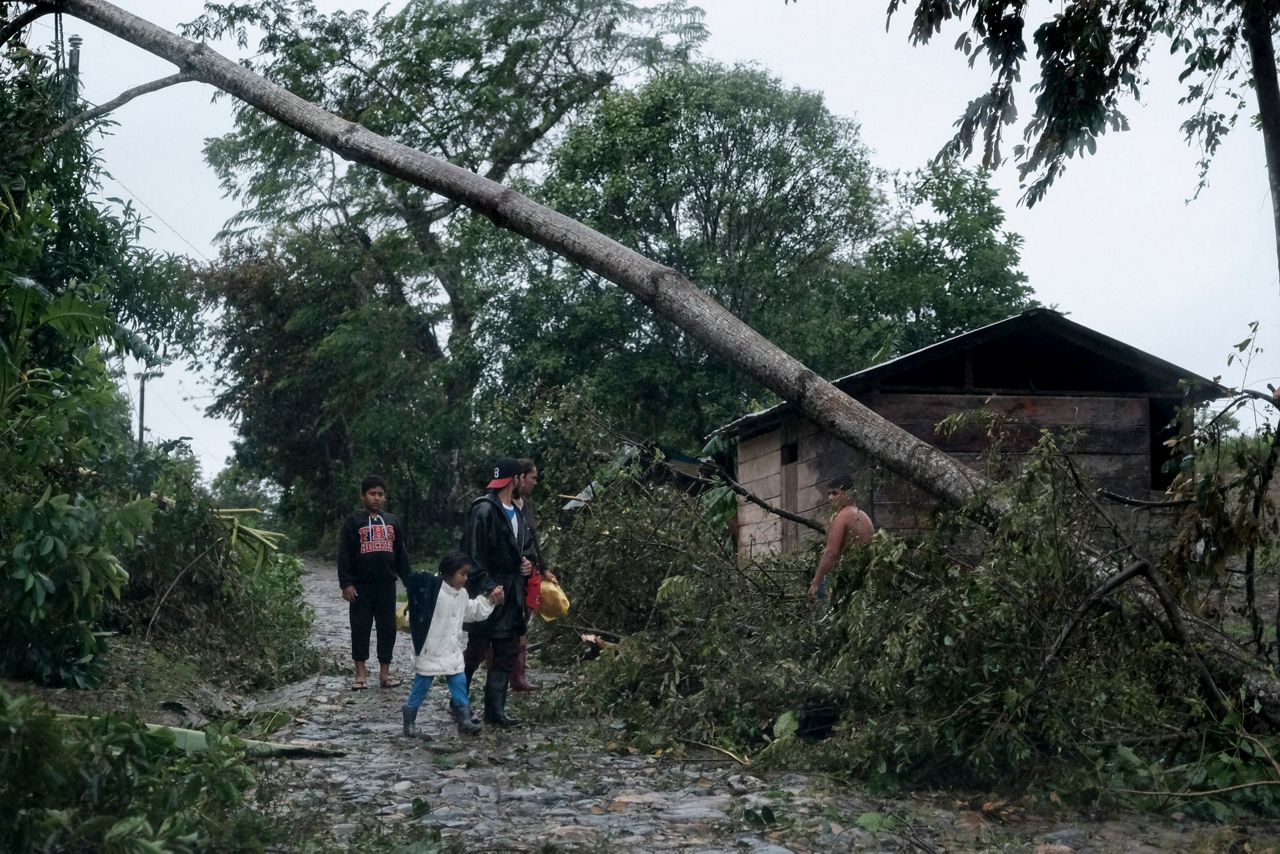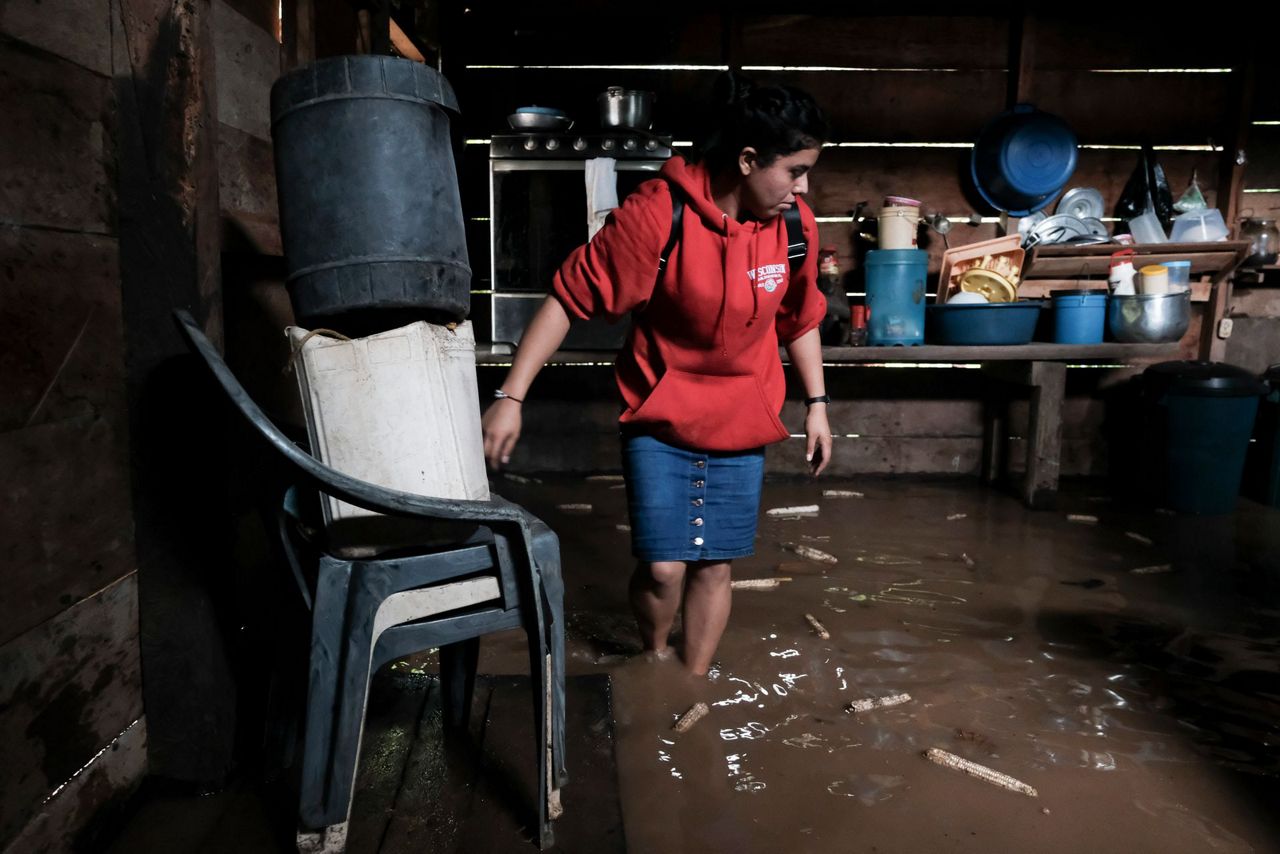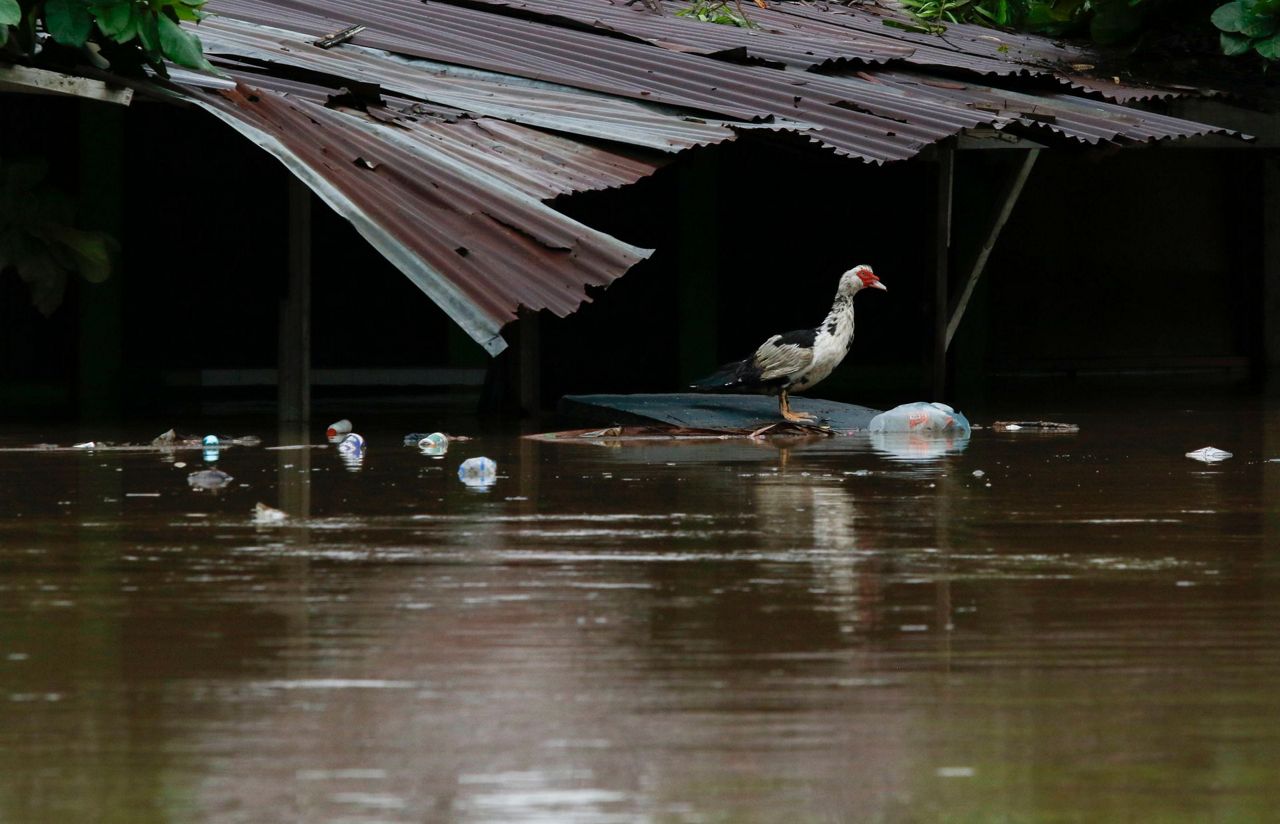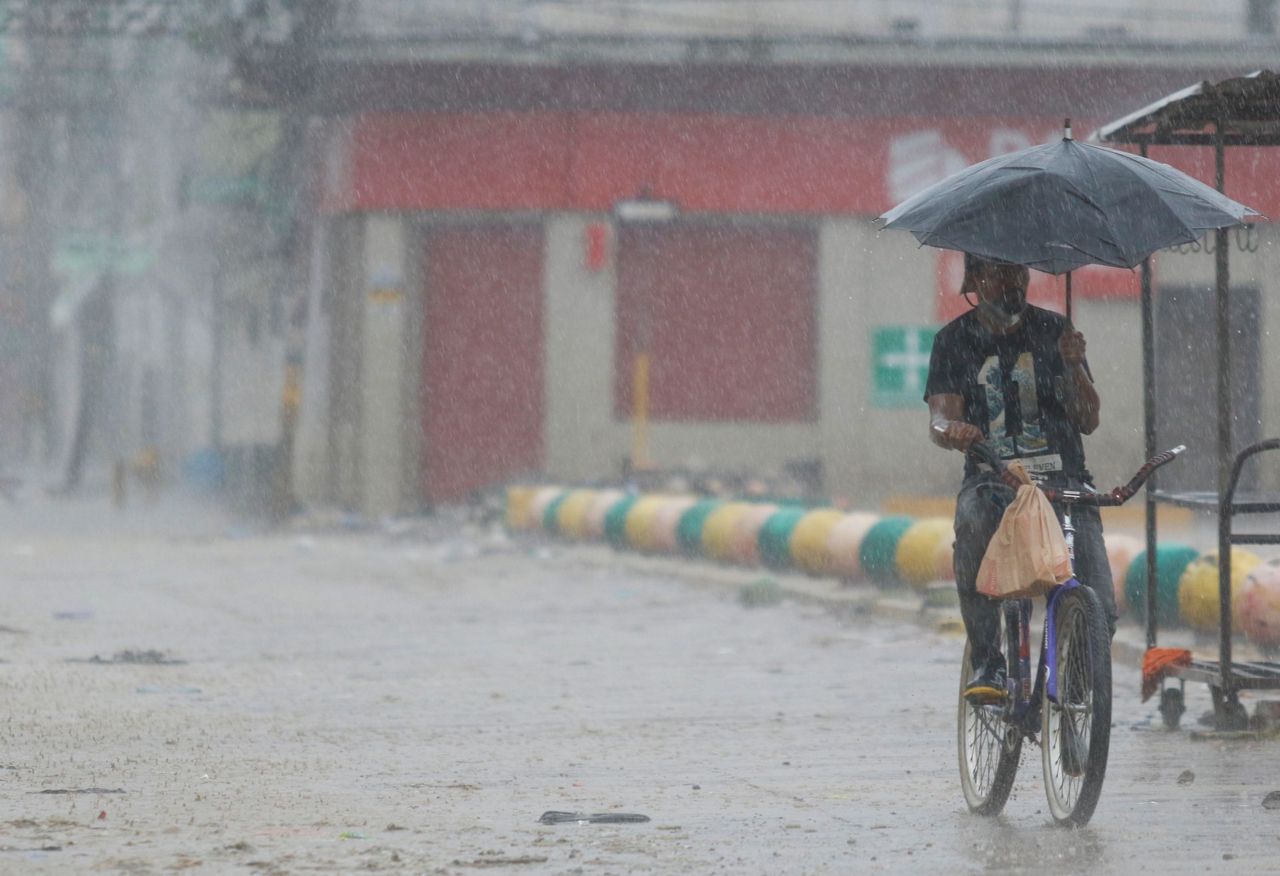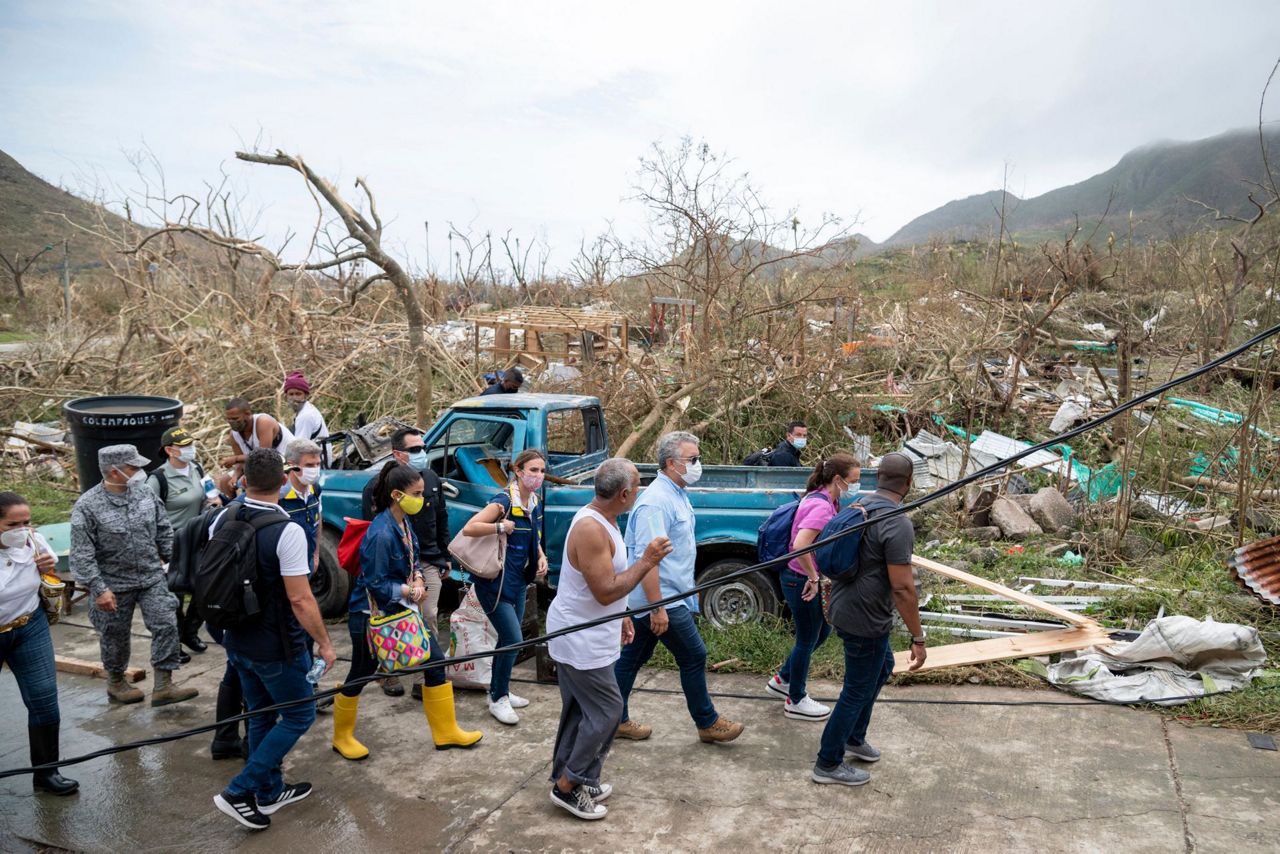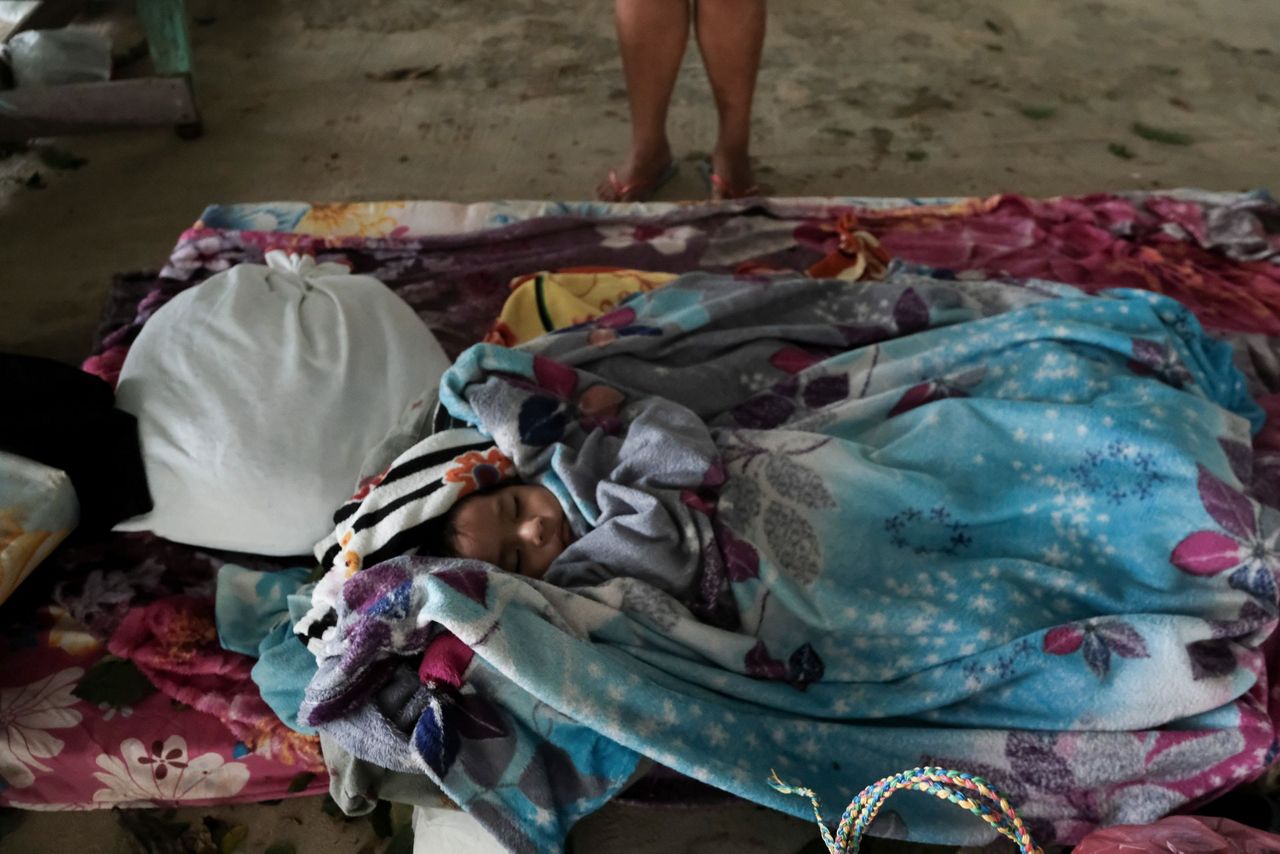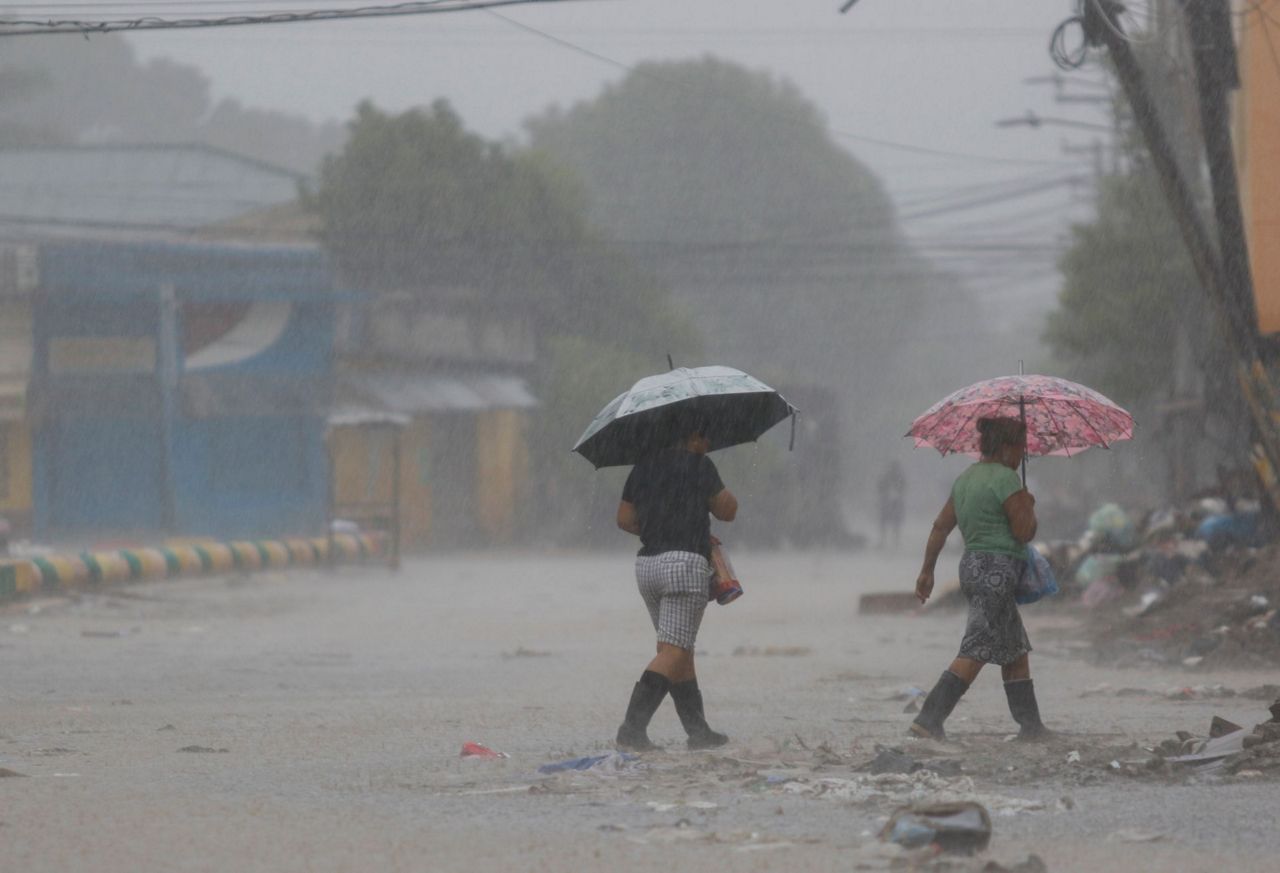MACIZO DE PEÑAS BLANCAS, Nicaragua (AP) — The devastation caused by Hurricane Iota became clearer Wednesday as images emerged showing piles of wind-tossed lumber that used to be homes and concrete walls that were pounded into pieces by the second Category 4 storm to blast Nicaragua’s Caribbean coast in two weeks.
Nicaragua Vice President and first lady Rosario Murillo on Wednesday raised the nation's death toll to 16. The victims were spread across the country, swept away by swollen rivers or buried in landslides.
Rescuers searched at the site of a landslide in northern Nicaragua, where the local government confirmed four deaths and neighbors spoke of at least 16. A short video from the nation's emergency management agency showed a massive bowl-shaped mountainside shrouded in clouds that collapsed. Police blocked media access to the site on the Macizo de Peñas Blancas, a mountain in Matagalpa province, about 80 miles (130 kilometers) north of Managua.
There were seven confirmed dead at the mountain, and the search continued, Murillo said.
Miguel Rodríguez, who works on a ranch next to the site, said he saw at least seven bodies.
“The landslide came with all the dirt, and it became like a river going down. It took all of the little houses that were there. There were five homes, five families,” Rodríguez said.
One home was spared on the other side of the slide. But it was in a precarious position, and rescuers were trying to reach it, he said.
Nicaragua’s army said it was sending 100 rescuers to the site. Access was complicated by downed trees blocking roads.
Rolando José Alvarez, the Roman Catholic bishop of Matagalpa, said via Twitter that priests were being sent to the area.
In the coastal city of Bilwi, a distraught Filimon Wilfred, 72, said Iota had destroyed his family's five houses leaving its 18 members homeless.
“The hurricane came, it destroyed my house, my daughter’s house. It destroyed five houses in total," Wilfred said. "Where am I going to live?”
Late Wednesday, Guatemalan authorities said two people had died and two were missing following a landslide near Purulha in central Guatemala.
Iota arrived Monday evening with winds of 155 mph (250 kph), hitting nearly the same location as Hurricane Eta two weeks earlier. By early Wednesday, Iota had dissipated over El Salvador, but the storm's torrential rains remained a threat. Parts of neighboring Honduras were still under water from Eta.
The storm's center passed just south of Tegucigalpa, the mountainous capital of Honduras, where residents of low-lying, flood-prone areas were evacuated, as were residents of hillside neighborhoods vulnerable to landslides.
Along Honduras’ remote eastern coast, people fled their homes as waters rose.
“What affected us most here was the flooding," said Teonela Paisano Wood, mayor of the Honduran town of Brus Laguna. “We are in danger if it keeps raining.”
Mirna Wood, vice president of the Miskito ethnic group in Honduras’ far eastern Gracias a Dios region, was in Tegucigalpa collecting donations for her community ravaged by Eta when Iota hit.
Some 40,000 people in the area had moved to shelters, but others remained stranded near the border with Nicaragua. Some were rescued by Nicaraguan authorities, she said.
“We are facing an incredible emergency,” Wood said. “There is no food. There is no water.”
Panama reported that one person was killed and another missing in its western Indigenous autonomous Ngabe Bugle area near the border with Costa Rica.
Earlier this month, Eta caused more than 130 deaths as it triggered flash floods and mudslides in parts of Central America and Mexico. The storm also left tens of thousands homeless in Honduras, which reported 74 deaths and nearly 57,000 people in shelters, mostly in the north.
Before hitting Nicaragua, Iota blew over the tiny Colombian island of Providencia, where Colombian President Ivan Duque said one person was killed and 98% of the island's infrastructure was “affected.”
Iota was the 30th named storm of this year’s historically busy Atlantic hurricane season. It also developed later in the season than any other Category 5 storm on record, topping a Nov. 8, 1932, Cuba hurricane, said Colorado State University hurricane researcher Phil Klotzbach.
The hurricane season officially ends Nov. 30.
___
Associated Press writers Christopher Sherman in Mexico City, Marlon González in Tegucigalpa, Honduras, and Manuel Rueda in Bogota, Colombia, contributed to this report.
Copyright 2020 The Associated Press. All rights reserved. This material may not be published, broadcast, rewritten or redistributed without permission.



